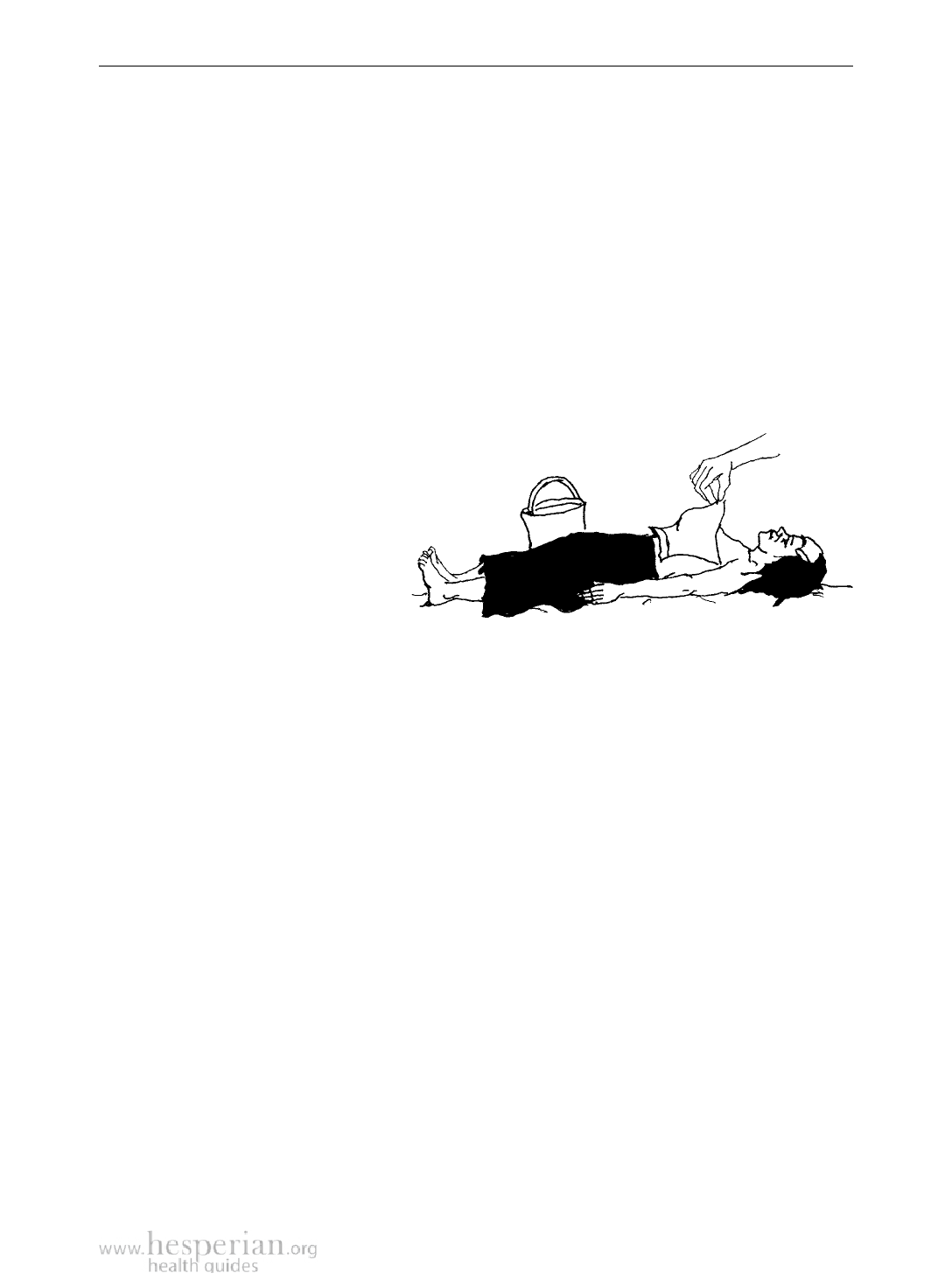
Caring for Burns 539
2. Burns that cause blisters (2nd degree)
After cooling, do not break the blisters. Do not make a hole in the blister
or take out the liquid inside—not even with a needle and syringe that has been
disinfected. If the blister does break, use scissors that have been disinfected to
gently remove all the dead skin. Then use mild soap and boiled, cooled water on
sterile cotton or gauze, or disinfected cloth, to gently clean the burn. You can also
use hydrogen peroxide. Remove any remaining burned skin on and around the burn
until you see the fresh pink skin underneath. Cover this fresh skin with a piece of
sterile gauze or disinfected cloth. If the cloth sticks to the burn when you want to
remove it, wet it with water that has been boiled and cooled.
To prevent infection in the burn area, apply a sterile gauze or disinfected
cloth that has been soaked in a salt water solution for 15 minutes, 3 times a
day. Each time you change the cloth, remove the dead skin and flesh carefully
with very clean tweezers, until you see fresh pink skin.
To make a salt solution:
Use 1 teaspoon of salt for 1 liter
or quart of water. Boil both the
cloth and water before use and cool
before putting on the burn.
If the burn does become infected, it will be even more painful, more swollen,
and the skin spreading out away from the burn will become hard and red. Use an
antibiotic, such as 250 mg of dicloxicillin or 250 mg of cephalexin, 4 times a day for
7 to 10 days. Give the person plenty of liquids.
3. Deep Burns (3rd Degree)
These are burns that destroy the skin and expose blackened and charred flesh.
These burns are always serious. Take the person for medical help at once. In the
meantime, wrap the burned part with a disinfected damp cloth or towel. Make
sure the water used to dampen the cloth has been boiled and cooled. Give the
person plenty of fluids.
If it is impossible to get medical help, treat the burn as you would a 2nd degree
burn. To protect the burn from dust and insects, cover it with a loose, sterile
cotton cloth or sheet. Change the cloth at least 4 times a day, or 2 times a day if
the cloth stays dry.
Give ‘rehydration drink’ (see page 540) as often as possible, until the person
passes urine frequently. If the person is unconscious or cannot swallow, give the
rehydration drink in the rectum (see page 541 for how to do this).
Any person who has been badly burned can easily go into shock, caused by the
loss of body fluids from the oozing burn.
Comfort and reassure the burned person, and treat her or him for shock if
necessary. Give any strong pain medicine you have. Bathing open wounds in
slightly salty cold water also helps ease pain.
Where Women Have No Doctor 2012